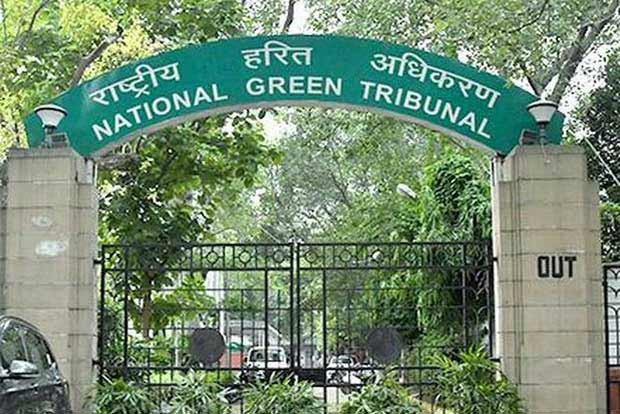This article is written by Gitika Wadhwani, from Jagran Lakecity University. This article deals with environment clearance requirements, processes, and consequences of violation.
Table of Contents
Introduction
There are many cases where commercial enterprises have been granted environmental regulatory approvals putting people or groups at risk who are adversely affected by the environmental degradation and projects undertaken by the companies. It is widely perceived that financial gains are always prioritized at the cost of public interest and environmental protection. The laws are bypassed to facilitate economic growth and the legalities required to be followed by these commercial enterprises are considered as obstacles that slow down the country’s growth. Before commencing any new project the industries have to go through a proper process. One of the steps is to get environmental clearance. This is a complex process and there are some problematic aspects in its regulatory framework.
Environmental impact assessment notification
The Central government issued the Environmental impact assessment (EIA) notification under the rules of the Environment (Protection) Act, 1986. The government has the power under the EP Act to take all measures necessary for protecting the environment and preventing environmental degradation. This notification aims at imposing restrictions and prohibitions on new projects or the existing projects’ expansion or modernization depending upon their potential impact on the environment. The EIA notification requires a pre-determined set of projects to obtain prior environmental clearance.
The EIA notification schedule states the details of categories of projects or activities which require prior EC. It includes mining and extraction of natural resources and power generation projects, material production, primary processing projects, material production projects, service sector projects, etc. The projects’ categorization is broadly split into two types: Category A projects in the schedule deals with projects which require prior environment clearance(EC) from the Central Government. Category B deals with projects that require clearance from the State Environment Impact Assessment Authority (SEIAA).
There is an exception to this division of regulatory roles between the Ministry of Environment, Forest and Climate change (MoEF) (central government) and the SEIAAs (state government). Under ‘General Conditions’ it is stated that if a category B project is located in whole or in part within 10 km from the boundary of protected areas, critically polluted areas, eco-sensitive areas, inter-state boundaries, or international boundaries it would be treated as a category A project.
The EIA notification schedule also states ‘specific conditions’ for five categories of projects. The condition states that if any individual industry including proposed industrial housing operating or set up within those industrial estates that have obtained prior environmental clearance, these new set up within those industrial estates do not require separate EC to operate. The condition is that the industrial estate must comply with the terms and conditions of prior environment clearance. If any proposed project or activity mentioned in the schedule is beyond the manner or limits set in the schedule it would require prior EC as per the conditions mentioned in the EIA notification.
Role of Centre and state in EIA Process
Centre
The central government plays a significant role in the implementation of the EIA notification at the central level through the MoEF. As a primary policymaker, the MoEF is expected to ensure smooth implementation of the notification across the country by issuing clarifications, office memorandum, circulars, etc. To other authorities involved in the process. Granting or rejecting applications for the EC for category A projects, appointing centre and state level Expert Appraisal Committees, monitoring the implementation and compliance with the EC conditions all these are done by the Centre through the MoEF and other functionaries. The Expert Appraisal Committees (EAC) is constituted by the MoEF. They play a crucial role in considering applications for category A projects for the EC. Different EACs deal with different categories of projects. Its role is recommendatory in nature, they do not have the power to reject or accept applications for the EC.
The power lies with the government through the MoEF. EACs are constituted for three years terms and consist of experts and professionals with expertise or experience in areas of risk assessment, EIA process, environmental economics, sectoral experts, environmental quality, etc. The EACs work independently of the MoEF. Some of the activities are performed by the Central Pollution Control Board that are relevant in the EC process. The CPCB has the list of critically polluted areas, industrial clusters and a moratorium has been declared on grants of the ECs for projects proposed in these areas. Also, projects under Category B located within ten kilometers of critically polluted areas as identified by CPCB are considered category A projects.
State
The SEIAA performs the regulatory function at the state level. It grants or rejects applications for the EC for Category B projects. It is constituted by the MoEF in each state and union territory upon recommendation from the respective state government or union territory administration. SEIAAs get financial and logistics support from state governments. It consists of a chairperson, a member, and a member secretary. The chairperson and members must have professional expertise similar to that of EAC members and the term is three years. The member secretary ordinarily is a serving officer of the state government or Union territory administration who is familiar with environmental laws. The member secretary or any other officer of the state pollution control board should not be a member of the SEIAA directed by NGT to the MoEF. It is done to facilitate the independent assessment of the projects at the SEIAA level.
The EC applications are decided by SEIAA based on the recommendations of SEACs. SEACs are constituted by the central government in consultation with the state government, and composition is along the same lines as the EACs. Unlike EACs at centre, most states have only one SEAC to appraise all categories of projects. Across states, the number of members in the SEAC varies. It is provided financial and logistics assistance from the state government. The SEAC has a recommendatory role like the EAC with SEIAA being the final authority to decide for category B projects. The state pollution control board is responsible for the facilitation and conduct of the public consultation component of the EC process for both categories of projects. It also reports the proceedings to either the MoEF or the SEIAA, as the case may be. Primary monitoring is done by the regional offices of the MoEF but SPCBs are involved to a certain level. They are constituted by state governments and play an important role in the EC process.
Environment clearance process
- Before Final Decision
The environmental clearance process consists of four stages:
- Screening
This stage is particularly for category B projects or activities. At this stage, all the applications seeking prior environmental clearance in form 1 are scrutinized by the concerned state-level Expert Committee (SEAC). They determine whether the project requires any further environmental studies for the preparation of an EIA for its appraisal depending upon the nature and location of the project. The projects that require an environmental impact assessment report are termed as category ‘B1’ and others that do not require the EIA report are termed ‘B2’.
- Scoping
Scoping requires the Expert Appraisal Committee or State Level Expert Appraisal Committee to determine detailed and comprehensive Terms of Reference (TOR) required to prepare an Environmental Impact Assessment( EIA) Report in case of Category A or Category B1 projects. These TORs are determined based on Form 1/Form 1A information and include the terms proposed by the applicant.
The set of model terms of reference are provided by the MoEF on its website for different sectors, the EAC and SEACs can rely on these models for drafting ToRs as per their project specifications. While framing ToRs EAC and SEACs may undertake a site visit to the proposed project site. At the end of this stage, the decision has to be issued within sixty days of Form 1 being submitted by the proponent. The project proposal can be rejected at the scoping stage. If the appropriate regulator decides to reject the project, the decision should be communicated to the project proponent with reasons. If EAC or SEAC recommends ToRs then they have to be conveyed to the project proponent by the appropriate regulator and displayed on the regulator’s website. If within sixty days the ToRs are not finalized then the ToRs suggested by the project proponent will be considered final.
- Public consultation
Once the project proponent completes the impact assessment studies the process of public consultation begins. The public consultation is an important step in deciding whether to grant the Environmental Clearance or not. Public Consultation is defined under EIA notification as “the process by which the concerns of local affected persons and others who have a plausible stake in the environmental impacts of the project or activity are ascertained to take into account all the material concerns in the project or activity design as appropriate.
Category A and Category B1 projects necessarily need public consultation. However, certain projects are exempted. The project that can be exempted can be amended by the MoEF through an Office Memorandum. The public consultation has two components-
- Public hearing
The main purpose of the public hearing is to ascertain the concerns of the local people who are affected. A public hearing has to be conducted as per procedure in Appendix IV of EIA notification. The responsibility to conduct and facilitate public hearings is on State Pollution Control Board (SPCB) or the Union Territory Pollution Control Committee (UTPCC). It has to be organized in a systematic, transparent, and time-bound manner and the possibility of public participation. The process of the public hearing can be understood in three parts:
i. Before the public hearing
The submission of a letter by the project proponent to the relevant SPCB requesting it to arrange a public hearing is the first step to the public hearing process. It should be completed within forty-five days from the date of letter submission. The public hearing has to be held in every district if the proposed project site is situated in more than one district. If the project site is located in more than one state, separate letters have to be sent to each state’s SBCBs. Following the ToRs issued at the end of the scoping process, a draft EIA report and its summary have to be prepared and the project proponent has to forward it to the MoEF, the offices of the District Magistrate/District Collector/Deputy Commissioner, the Zila Parishad, the district industries office, urban local bodies, Panchayati raj institutions, development authorities and the concerned regional office of the MoEF. the Member Secretary of the concerned SPCB has to finalize the date, venue, and time for a public hearing within seven days of receiving the draft reports from the proponent. The information advertisement has to be made through a notice in one major national daily newspaper and one regional vernacular.
ii. During the public hearing
The public hearing is supervised by the District Magistrate, District Collector, or Deputy Commissioner, assisted by the SPCB representative. There is no restriction on who can attend the public hearing. A hearing can be commenced with only a few participants and the presiding panel. The presence of each person who attended the hearing has to be marked. The video recording of the entire proceeding has to be arranged by the SPCB. A copy of the recording and attendance sheet along with a written record of proceedings has to be sent to the appropriate regulator.
The project proponent’s representative begins the hearing by presenting the draft EIA report summary. Every person present during the hearing has to be allowed to present their views or ask any query on the project from the representative. The presiding panel prepares the summary of the proceedings and reads it over to the audience in the local language to verify. The presiding officer signs the agreed minutes on the same day and forwards them to the concerned SPCB. Also, the issues raised by the public and comments of the project proponent are attached.
iii. After the public hearing
After completion of the hearing, the public hearing proceedings have to be displayed at the panchayat office where the project is located. Also, the SPCB has to display the proceedings on the website and forward it to the appropriate regulator within eight days of the completion of the hearing.
- Written responses
In the public consultation process, the second component is written responses by other concerned persons to the appropriate regulator. The regulator and the SPCBs have to place the EIA report draft’s summary and project proponent’s application on their website and seek responses from concerned persons. The responses received from the public have to be forwarded to the project proponent as soon as possible.
The concerns raised during the public hearing and in written responses have to be addressed by the project proponent either by submitting a final EIA report or supplementary report to the draft EIA report.
4. Appraisal
After submitting the EIA report and the Environment Management Plan (EMP) after public consultation by the project proponent the appraisal stage begins. The EACs or SEACs scrutinized the EC application and other documents in detail. There should be transparency in appraisal and if any necessary information has to be taken about the project an authorized representative of the project proponent may be invited. The EACs/SEACs then may recommend the project for the EC grant or reject the same, with reasons. The EAC/SEAC has to appraise the application within sixty days from the day on which it is received along with necessary documents. Within five days the EAC/SEAC minutes of the meeting have to be prepared and uploaded on the regulator’s website with safeguards/conditions imposed on the project in case the EC is granted. If the EC application is rejected the minutes must include the reasons.
- Final decision
After EAC/SEAC gives its recommendations, the appropriate regulator has to consider and make the decision within 45 days. Normally recommendations received are accepted by the appropriate regulator, but in case of any disagreement, the regulator has to provide reasons for the same and request EAC/SEAC to reconsider the recommendations within sixty days. After completing the second round of recommendations, the regulator’s decision is final and should be communicated to the project proponent within thirty days. In case the final decision is not informed to the project proponent within the stipulated time, the proponent can assume the final recommendation of EAC/SEAC to be the final decision.
The environmental clearance letter issued to the project proponent includes a list of conditions to be followed by the project proponent during the project. These standards are to be complied with by the project proponent. The recommendation of EAC/SEAC and the final decision of the regulator are public documents. If any information given by the project proponent is false or misleading and the EC has been granted such an application, the EC can be cancelled. Before cancelling or taking any decision, the project proponent will be given a chance to be heard by the regulator.
- After Clearance
Environment clearance validity
The EC validity differs from project to project. For river valley projects, the EC is valid for 10 years. For mining projects, the EC is valid for the entire project life, as determined by EAC/SEACs, subject to a maximum of thirty years. For other categories of projects, the EC is valid for five years. For area development projects, the validity is calculated from the date on which the EC is granted to the date on which the project proponent has completed all the activities.
Environment clearance publication
Through the 2009 Amendment in EIA notification, publicizing the information about the EC grant is made mandatory. The EC grant has to be displayed by the project proponent on its official website. The EC has to be placed on the government portal by the appropriate regulator. In the case of Category A projects, the advertisement of the EC grant and the safeguards and conditions in two local newspapers of district or state where the project is located is done by the project proponent at his own cost. For category B projects the advertisement of the EC grant is done in two local newspapers by the project proponent and provides a link to the MoEF where information about the EC would be available.
Compliance and monitoring
After the grant of the EC, the project proponent has to submit half-yearly reports to the regulator about the compliance of conditions and safeguards imposed on the project. Hard and soft copies are submitted for compliance and made available to the public. The obligations on the project proponent to self-monitor its operations based on several parameters are included in the EC letter. These reports are to be submitted regularly to the regional office of the MoEF, CPCB, SPCB and, or any relevant government agency. The regional offices of the MoEF have a responsibility to monitor the compliance of the EC conditions. Certain conditions relating to compliance have to be included in the EC letter such as placing results of monitoring data on the proponent’s website.
Transfer of EC
The transfer of the EC can be done to another legal entity during its validity by applying to the appropriate regulator. The transferor can transfer in the name of the transferee. The transferee can also apply for the transfer from the transferor with no objection. The conditions and validity of the EC remain the same. In a case where a company with a record of environmental and civil rights violations can buy an EC from a company that was granted the EC initially. The poor image of the transferee would be irrelevant in this case which would have been relevant in the appraisal process.

Consequences of violation
The EIA notification does not specify the consequences of violations except for the concealment of information in paragraph 8(vi).
- Any violation of the provisions of notification would face consequences under Section 15 of the Environmental Protection Act.
- If a complaint is filed, the MoEF and EAC have to verify the validity of the complaint.
- If the complaint is found to be valid, the project would be delisted and the project proponent would be required to submit a formal resolution of the Board of Directors stating that the violation won’t be repeated.
- It has to be done within sixty days. If the project proponent does not respond within this time limit, the project file will be closed and no future action will be taken only if the proponent applies.
- Simultaneously, the state government will take necessary action under the EP act. And submit evidence of credible action taken to the MoEF. The project proponent’s information and written commitment would be placed on the MoEF website.
- The MoEF will issue directions to suspend all the activities till appropriate EC is obtained. Action will be taken against the project proponent and the EC application will be rejected if the directions are violated.
- If all the conditions are met, the project will again be considered at the appropriate stage.
- However, during the decision-making process, the fact of violation will be material. The MoEF/SEIAA reserves the right to reject the project proposal even if the conditions for the project are met by the project proponent.
Grievance redressal
In case of any grievance related to a grant of the EC or the rejection of an application for the EC by the regulator may be challenged before the NCT through an appeal.
- The person can approach NGT within thirty days of communication of the order to the person.
- NGT has jurisdiction under Section 16 of the National Green Tribunal Act, 2010. The EC conditions and compliance issues can also be raised before NGT.
- NGT has jurisdiction to hear civil cases where any substantial question is involved related to the environment. And cases related to the implementation of EIA Notification also fall under the ambit of NGT.
- The right to appeal before NGT is not a bar to appeal to high courts. High courts have writ jurisdiction under Article 226 of the Constitution of India which can be invoked in issues relating to the implementation of notification.
Power to regulate
The regulation of development and construction of projects through the EC process affects the interest of states. The question arises as to how much power the states have in decision-making. In EIA notification, the powers are divided between the centre and the state. Category B projects are regulated at the state level with certain exceptions under general conditions. Category B projects which do not have to undergo EIA studies have a less cumbersome clearance process. State governments have a very crucial role in the regulation of these projects, the SEIAAs and SEACs are constituted by the central government on the recommendation of the relevant state government. These bodies are provided financial and logistical support by the respective state governments.
The state’s power can be reduced by the central government by amending the schedule and bringing more projects in category B. the central government can increase the administrative burden on state government by introducing procedural requirements. The Environmental protection Act gives extensive powers to the centre to regulate environmental actions and protect the environment.
The state has no power to exempt EC requirement
In Dastak N.G.O vs Synochem Organics Pvt, Ltd. & Ors., (2021)the manufacturers of formaldehyde, requiring prior EC, were ordered by the State of Haryana to operate without the EC for six months by making an application for EC. The applicant submitted that the units cannot operate without prior EC. The NGT stated that the EC is a statutory mandate and units cannot operate without the EC. For any violations, the actions can be taken by the concerned authority appropriately.
In Alembic Chemicals v. Rohit Prajapati & Ors. (2017) the Supreme Court held that the prior EC requirement is mandatory and the state has no power to exempt the prior EC requirement on payment of compensation. The state has no delegated power under the Environment Protection Act to exempt EIA requirements.
Conclusion
Business is a part of society and it uses society’s resources to succeed. It must protect society and the environment. Owing to growing pollution caused by industries for commercial gains, it has become mandatory for all industrial units to obtain prior environmental clearance to operate and function without any obstruction. The government through EIA notification has mandated projects to get the EC. There is a proper process which the project proponent goes through by applying for the EC and state level and central level authorities play an important role in decision making and granting the EC to the project proponent after analyzing and reviewing the terms and conditions to be followed by the proponent. The industries have to comply with the standards and conditions of the notification to operate. They cannot skip the process of the EC or cannot operate without prior EC. Time and again it is being reiterated by NGT and the supreme court that the state has no power to exempt prior EC requirements. Therefore, it is a mandatory document for all industrial units.
References
- https://www.thehindu.com/news/national/industries-cannot-operate-without-prior-environment-clearance-ngt/article34751177.ece
- https://www.cseindia.org/environmental-clearance—the-process-403
- https://main.sci.gov.in/supremecourt/2016/2562/2562_2016_0_1501_21582_Judgement_01-Apr-2020.pdf
LawSikho has created a telegram group for exchanging legal knowledge, referrals and various opportunities. You can click on this link and join:
https://t.me/joinchat/L9vr7LmS9pJjYTQ9
Follow us on Instagram and subscribe to our YouTube channel for more amazing legal content.
 Serato DJ Crack 2025Serato DJ PRO Crack
Serato DJ Crack 2025Serato DJ PRO Crack










 Allow notifications
Allow notifications



